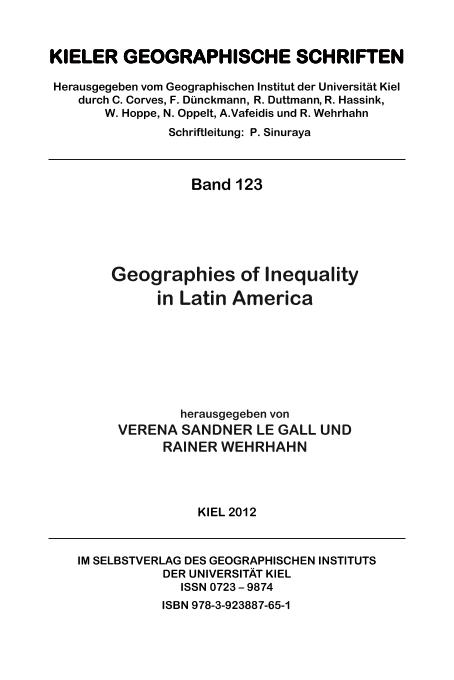Artículo
Agriculture and Cattle Frontier Advance and Variation of Poverty in the North of the "Gran Chaco Argentino" during the 1990s
Fecha de publicación:
12/2012
Editorial:
Selbstverlag des Geographisches Instituts der Universität Kiel
Revista:
Kieler Geographische Schriften
ISSN:
0723-9874
Idioma:
Inglés
Tipo de recurso:
Artículo publicado
Clasificación temática:
Resumen
The “Gran Chaco Argentino” (GCA) is the major extension of forest and the major bi- omass reserve of the country and the extra tropical south hemisphere. During the 1990s this region underwent an intense process of change of land use. In parallel, a fast growth in deforestation rate was produced, an unprecedented advance of the agriculture and cattle frontier and a substitution of traditional crops (cotton, sugar cane, beans) by oleaginous (mainly soy beans) and forage crops. The increase of the soy bean and wheat crops and the intensive cattle raising in the GCA changed the physiognomy of the territory to transform it from being a marginal productive area to being an area of increasing importance within the national economy. However, the new economic activities which were introduced into the territory, and which generated great richness and important territorial transformations, do not seem to have led to genuine regional growth. Despite the important economic dynamism that the agricultural activity produced, and produces at the present time, the regional poverty rates cannot be changed. Instead, highly-profitable economic activities began to exist in the same territory as situations of extreme poverty. In this paper we therefore ask if relations between the agriculture and cattle frontier advance and the poverty conditions of the population exist. That is to say, we wonder in which way the increase of the soy bean-sown area and the increase of cattle in El Chaco are related with the advance, stagnation or decline of the poverty level. Our starting hypothesis is that the dynamism of the agriculture and cattle sector largely characteristic of El Chaco during the 1990s did not mean an improvement in the living conditions and that, parallel to the increase of profitable activities, poverty level increases were also ob- served. For the analysis of the agriculture and cattle frontier advance, data from the Na- tional Agriculture and Cattle Surveys of 1988 and 2002 were used; these refer to sown surface area by crop and cattle, and distinguish between departments. The sown surface was grouped according to large extensions of crops, distinguishing the soy bean-sown surface area individually. To evaluate the poverty evolution the Index of Life Resources Privation (IPMV) drawing on data from the National Population, Families and Houses Surveys of 1991 and 2001 was used. The results show that together with a growth in the sown area (mainly with soy beans) and cattle, there was a generalized increase in poverty conditions among the GCA population. Precisely those departments that most increased their poverty in the 1990s were the ones that showed most changes in relation to the expansion of the sown area, increase in number and average size of agriculture and cattle enterprises (EAPs), and increase in oleaginous crops and cattle. These results permit us to affirm that the economic activities which developed in these departments were not effective enough to reduce poverty. On the contrary, apparently, the scanty redistribution of the profits obtained by means of these new economic activities, led to an increase in poverty level. The reasons for this non-redistributive behavior would have to be related to the presence of foreign businessmen and the weak reinvestment of the profits in the region.
Palabras clave:
Chaco
,
Poverty
,
Agriculture
,
Cattle Raising
Archivos asociados
Licencia
Identificadores
Colecciones
Articulos(ISES)
Articulos de INST.SUPERIOR DE ESTUDIOS SOCIALES
Articulos de INST.SUPERIOR DE ESTUDIOS SOCIALES
Citación
Paolasso, Pablo Cristian; Krapovickas, Julieta; Longhi, Hugo Fernando; Agriculture and Cattle Frontier Advance and Variation of Poverty in the North of the "Gran Chaco Argentino" during the 1990s; Selbstverlag des Geographisches Instituts der Universität Kiel; Kieler Geographische Schriften; 123; 12-2012; 51-76
Compartir




